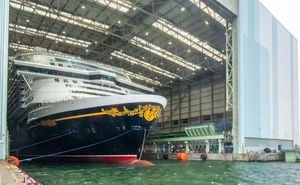Stellantis, the automotive giant born from the merger of Fiat Chrysler Automobiles and PSA Group, faced unexpected upheaval when Carlos Tavares, its CEO, announced his resignation. This abrupt departure, which took many industry insiders by surprise, is poised to significantly impact the direction of the company and the broader automotive market.
Under Tavares' leadership, Stellantis became one of the major players within the automotive sector, particularly noted for its agility and adaptability during times of crisis. Throughout his tenure, he pushed the company toward electrification, focusing on sustainability and innovation—key aspects of future mobility. Tavares’ vision to transition Stellantis to more electric and hybrid vehicles is well-documented, yet it seems even his best efforts to navigate the fast-evolving automotive industry were not enough to maintain his position.
The timing of Tavares’ resignation raises eyebrows, particularly against the backdrop of increasing challenges within the auto industry. Companies are grappling with supply chain disruptions, fluctuated consumer preferences, and the push for greener technologies. Many analysts argue the automotive sector is undergoing one of its most transformative times, with many manufacturers attempting to pivot swiftly to meet new expectations surrounding electric vehicles and sustainable practices. Tavares himself has made it clear through his strategies and announcements over the past few years how pivotal this transition is, yet the question many are asking is: Could he have foreseen the challenges leading to his resignation?
The immediate reaction from the industry was one of concern. Stock prices saw a slight dip as investors reassessed the situation. According to sources, the executive team at Stellantis is now racing against the clock to find a successor who can continue Tavares' ambitious plans for the company, especially its electrification goals. The candidate will need to accomplish not just the scaling of electric vehicle production but also the retention of competitive advantage over other automakers.
Industry leaders and analysts have chimed in, speculating on the potential reasons behind Tavares’ resignation. Some attribute it to internal corporate struggles, with reports of friction within Stellantis' global teams. Others suggest the pressures of balancing traditional automotive operations against the budding demand for sustainable practices may have worn on Tavares, who previously enjoyed considerable support from board members and stakeholders. The juxtaposition of thriving business operations against increasing public scrutiny over environmental practices might well have contributed to the situation.
Stellantis's plans during Tavares' tenure included the introduction of new electric vehicle models, expansions of manufacturing capabilities, and even strategic partnerships within the industry. With so much on the table, observers are actively questioning how the company will forge ahead without its driving force. Now, with Tavares at the helm no longer, the future direction of Stellantis hangs delicately: will it continue on the course Tavares laid out, or will it seek to redefine its approach?
Adding to the intrigue, Tavares is known for his candidness about the challenges faced by the automotive world. His foresight about global supply issues and the semiconductor crisis is notable—he consistently warned of disruptions when many were still confident about the steady recovery post-pandemic. Such insight has led many to wonder whether his departure signals more trouble brewing within Stellantis than provides clarity.
Those observing Stellantis closely are not just hoping for immediate survivability but are also interested in the long-term adaptation strategies of the automotive conglomerate. Some industry experts suggest this might be the perfect opportunity for Stellantis to implement bold changes or even embrace more aggressive targets related to electric vehicles. On the other hand, speculation is rife about potential candidates eyeing the top job. Who will emerge as Tavares’ successor, and how will their vision shape the company's future?
Meanwhile, Stellantis’ competitors are watching closely, ready to capitalize on any sign of instability. The merger's harmonization aimed at optimizing their combined strength, and they know every movement from Stellantis must be monitored carefully. How Stellantis navigates the post-Tavares era could determine its competitive foothold for years to come.
Industry experts posit multiple scenarios as they dissect the turmoil within Stellantis. Some believe it could be the catalyst needed for Stellantis to refocus and come back stronger, accordingly redirecting its electrification ambitions with fresh leadership. Others caution about potential volatility, as transitioning to new steering could lead to abrupt pivots during uncertain times.
What remains evident is the impact Tavares' departure will have on all stakeholders involved, from shareholders to employees and even consumers eagerly awaiting new vehicles. Moving forward, Stellantis must remain agile, adapting not only to the rapid changes within the automotive ecosystem but also to the shifting expectations of society at large.
The question is, will the next CEO be able to steer the path laid before them, or will this be the start of significant changes within Stellantis? Only time will tell, but for now, the automotive world watches with bated breath as one of its prominent leaders steps away from the arena.



